Catalina Niño: You have worked for many years and in many countries on various issues related to organized crime. Could you give us an overview of current organized crime dynamics, actors and activities globally and in Latin America? What is the place of drug trafficking in this landscape?
Vanda Felbb-Brown: Organized crime and illicit economies are enormously varied and diverse, highly dynamic and adaptive and innovative, with innovation often emerging in response to law enforcement actions. The illicit economies involve a wide scope of commodities and services, with some of the most iconic ones including drug trafficking, human smuggling and trafficking, illegal logging and mining, poaching and wildlife trafficking, smuggling in counterfeiting of goods, cybercrime, gun smuggling and money laundering. More niche activities include smuggling in weapons of mass destruction materials, gasoline or oil theft, water theft and smuggling, and, most recently in the COVID era, sales of fake medical products. Nearly all of these economies are operating around the world. But major illicit economies also include old-fashioned extortion – whether by criminal groups or militant actors. Extortion is the kind of crime where predatory and transactional illegal economies intersect; corruption is another one.
This panoply of criminal activities and illicit economies have broad characteristics. Among them are:
1) Illicit economies and organized crime groups pose a wide variety of threats to states and societies; but they also bring various socio-economic and (semi)public goods services to vast segments of marginalized populations around the world: Hundreds of millions of people are dependent on illicit economies for basic livelihoods, social mobility, and access to public goods, such as street security, and thus the sponsors of illicit economies – criminal and militant groups or corrupt states and politicians – derive vast political capital from sponsoring them.
2) It is thus important to stop thinking about crime merely as an aberrant social deviation that must be suppressed. Instead, in large parts of the world it is important to think of the relationship between crime and anti-crime policies as a competition in state-making between criminal groups and states.
That means that to be effective, anti-crime responses must often go beyond law enforcement responses. Well-designed enforcement strategies and tactics that preserve human rights and civil liberties are key, inescapable, and essential. But appropriate responses should also often include specially tailored and well-designed anti-crime socio-economic responses (not merely general anti-poverty measures or socio-economic handouts) as well as other mechanisms to persuade the populations, particularly, marginalized populations, that the laws and regulations serve their best interests and are legitimate.
Laws are by far the easiest to enforce when the vast majority of people want to obey them and see them as beneficial. In parts of the world and for many segments of the population, that is not the case: What is illegal may be seen as highly legitimate. The costs of law enforcement under such circumstances are high.
3) Often however, the state is not in confrontational rivalry with criminal groups and sponsors of illicit economies. Various governments, government officials, and politicians around the world coopt and appropriate criminal groups, engaging in illicit economies and negotiate with them for a variety of reasons: narrow personal parochial gains to obtain money and votes; institutional objectives, such as to generate income for the country’s military, even from illegal sources; counterterrorism efforts; or even for geostrategic reasons. In some countries, the state is, in fact, arranged as a mafia bazaar – the purpose of taking over a government being to obtain immunity for one’s clique from the rule of law and law enforcement. The state can be very much part of the criminality in a locality or a country– exploiting it, building on it.
CN: In this sense, what role does drug trafficking play in this panorama of crime and violence?
VFB: Although these three characteristics encompass what is currently understood by crime and illegal economies, the truth is that these criminal markets vary enormously in terms of degree of violence. Latin America in particular stands out: Drug trafficking is as much as two orders of magnitude more violent there than in Asia, Europe, or the United States. In East Asia, violence in drug markets often stems from bad actions by the state – such as the egregious state-sanctioned murder that is labeled a “war on drugs” in the Philippines – rather than from the violence of criminal groups. Law enforcement forces in East Asia (like in Western Europe and the United States) possess deterrence capacities that their counterparts in Latin America by-and-large lack.
Yet high violence levels pervade all patterns of criminality in Latin America – from street robbery to crimes in natural resources. In East Asia, illegal logging, often perpetrated by large logging or agricultural companies, may be more violent than drug trafficking, but the violence levels still rarely amount to more than tens of people killed. The coronavirus COVID-19 pandemic, itself perhaps stemming from an illegal economy — wildlife trafficking (though potentially also from the legal trade in wildlife) — bringing in some new dynamics while reinforcing other tendencies.
First, the pandemic has dramatically increased the number of people whose livelihoods are dependent on illegal economies and thrust them into the hands of organized crime groups and militant groups that sponsor illegal economies. Between 150-200 million people have already been pushed into poverty from the middle class, a loss of a quarter of a century’s anti-poverty efforts in just eight months.
Although there have been shifts in types and patterns of illegal economies, modes of trafficking –higher shipments of drugs instead of smurfing; greater use of drones for trafficking; reinforcement of switching toward synthetic drugs; a temporary decrease of street predatory crime and a large rise of online crime followed by new increases of predatory crime — the power of criminal groups has grown tremendously as a result of COVID-19: both their political capital and often also their physical capabilities.
At the same time, at an aggregate level, states have become much weaker vis-à-vis criminal groups: The economic devastation of COVID-19 has decimated government budgets, necessitating even deep cuts of law enforcement budgets, thereby augmenting all kinds of pre-existing institutional deficiencies of law enforcement forces, including their brutality and corruption. If the number of cops is cut too low, crime thrives – law enforcement becomes overwhelmed; getting away with all kinds of crimes becomes easy; and criminal influence over corrupt officials grows. Even large institutional budgets are no guarantee of effective and legitimate law enforcement efforts to incapacitate criminals and deter criminal activity.
Globally, government struggles to respond effectively to COVID-19 have weakened the legitimacy of states and governments in multifaceted ways – once again to the benefit of illicit economies and their sponsors. COVID-19 has shifted more power away from states to criminal and militant groups. Most dangerously, COVID-19 and government responses have also reinforced the very economies (illegal and legal) that are critical sources of zoonotic disease emergence and disastrous global pandemics – namely, wildlife poaching and trafficking, logging, and mining. Logging in Brazil and the Amazon has not slowed down; its illegal and legal elements have intensified. In both countries, powerful resource extraction lobbies have succeeded either in getting new legislation passed to wave environmental concerns to allow more habitat destruction (thus speeding up the rate and extent of viral spillovers); or in allowing the loggers to enjoy higher permissive settings with minimal to nonexistent action by law enforcement. Poaching has also increased as rangers are deprived of salaries from governments or collapsed ecotourism, and desperate populations have lost legal incomes in rural areas or cities and moved to rural areas, where they engage in in poaching and logging.
China’s strong emphasis on Traditional Chinese Medicine that extensively utilizes wild plants and animals, the sponsorship of the TCM industry by China’s leader Xi Jinping, and Chinese government efforts to incorporate TCM into China’s Health Silk Road all pose enormous threats to global biodiversity and of faster arrival of another zoonotic pandemic – even as internally China appears to be moving toward tighter regulation and perhaps a total ban of one aspect of wildlife trade: wildlife meat for human consumption.
Wildlife poaching and trafficking has dramatically increased and continues to be increasing in Latin America, even as it receives much less attention there than drug production and trafficking.
CN: You have also thoroughly analyzed drug policy both in the US and at the international level. What is your assessment of the war-on-drugs strategy, enforced by the US for decades now? What have been its results, its unintended consequences?
VFB: I don’t like to use the term “war on drugs” because I don’t think it is useful to talk about any kind of policy, including drug policy, without specificity. Such broad and sweeping concepts produce little policy usefulness. U.S. counternarcotics efforts over the past several decades have had some stable patterns; other have been evolving, and have varied administration by administration.
Certainly, imprisoning drug user populations and some nonviolent street drug dealers have been highly counterproductive. Such policies do not reduce demand. They have destroyed the lives of nonviolent drug users, and can overwhelm prisons.
We should move away from such policies: Users need treatment — including medical treatment and prescribed medications, and multifaceted support — not imprisonment.
That does not mean, however, that drugs should be made legal. Indeed, with the exception of cannabis, I do not support drug legalization. Drugs such as cocaine, heroin, synthetic opioids, and methamphetamine are highly addictive and the substance-use disorder can destroy the lives of users, their families, and communities as much as imprisonment can. In the United States, we have been going through the most devastating drug epidemic ever in the U.S. history – the opioid epidemic. It started with legal prescription drugs and eventually mutated into heroin and then synthetic opioids. The last element – synthetic opioids, such as fentanyl — has been the deadliest; but the first element , legal prescription opioids, has been the critical culprit. The commercialization of necessary and vital prescription painkillers unleashed addiction levels that an illegal market could never achieve.
Those who believe that legalization will solve problems of drug policy should learn from the U.S. disaster, and its equivalent in Canada where extensive harm-reduction approaches almost melted underneath the onslaught of commercialized legal prescription opioids. Those very same companies and their international branches that unleashed the opioid epidemic in the United States are actively promoting the same disastrous and nefarious policies abroad, including in Latin America and places such as Brazil and Mexico.
On the supply side, in much of my writing, I warn of premature and highly counterproductive, eradication of drug crops without alternative legal livelihoods being in place. Such policies strengthen the political capital of criminal and militant groups in the way I’ve explained.
But that doesn’t mean, one again, that I believe drug trafficking should be legalized. Instead, I often urge prioritizing in targeting the labor non-intensive element of drug trafficking, such as by targeting trafficking. Creating legal jobs on a sufficient scale should be a critical element of most strategies for dealing with drug economies; though it is not relevant in some cases, such as in cracking down on fentanyl trafficking from China.
But how does one go about effective targeting? First, it requires that its objective is as much to reduce violence as it is to reduce flows. The goal is to create such deterrence capacity of law enforcement that drug trafficking becomes as nonviolent as in Western Europe and East Asia, and drug retail becomes as nonviolent as in U.S. suburbia, instead of as violent as it is in the center of various cities, such as Baltimore.
Second, targeting patterns must be matched to local circumstances. So-called decapitation strategies — also known as high-value targeting – are often highly ineffective in responding to drug trafficking groups, because replacing leaders in the illegal drug trade is very easy. The targeting can also be highly counterproductive if the fragmentation it causes exacerbates violence, as it has in Mexico.
Focusing on middle-level targeting – rounding up as much of the middle operational layer of a criminal or drug trafficking group as possible in one law enforcement swoop – is a much more effective strategy.
But my criticism of premature eradication or of high-value targeting doesn’t mean that I believe that legalization will displace dangerous blood-thirsty traffickers from a newly legal economy or turn thugs into nice men. A lot of other aspects would have to come into effect for that to be the outcome, including much strengthened law enforcement that has strong deterrence capacity, a strong functional judicial system promoting the rule of law, and a strong regulatory regime that has the capacity to prevent institutional and policy capture by vested interests.
In the absence of these crucial factors, legalization will merely allow criminals to operate in a newly legal economy, often with the same violent practices as they practiced in the illegal space. Thus, avocado farming in Mexico is dominated by extortion by violent criminal groups; and fights over land and territorial control among them are as much about access to legal economies as to local drug retail markets or drug routes. Corruption networks can also strongly operate, and often do, in legal economies where the rule of law is weak.
The broader point is: fix your justice and law enforcement institutions, strengthen their deterrence capacity and the rule of law, and then contemplate whether or not to make a particular economy legal or illegal. In the context of high violence and poor rule of law, legalization will not fix institutional problems or the societal problems of intense violence perpetrated by nonstate actors.
CN: There are a growing number of people (experts, politicians, activists) that think the war on drugs has been a failure. Many of them have made repeated calls for deep drug policy reform, citing human rights concerns as well as the lack of results of the traditional strategies. What is your view about this position / these calls?
VFB: Returning to what I said before, any strategy against crime – whether against illegal drug production and drug trafficking or poaching and wildlife trafficking – must strongly respect human rights and civil liberties. That has often not been the case and it must be redressed: internally in particular countries and in international and multilateral processes.
But all economies, including legal ones, require effective law enforcement. And as I have indicated, legalization alone is an insufficient mechanism for enhancing the rule of law. Nor should all the illicit activities be legalized: for example, I believe there are good reasons to prohibit unhygienic commercial markets in fresh wildlife meat — but with the exception of wildlife meat subsistence needs of forest -dependent communities where that exception needs to be combined with strong monitoring, zoonotic disease detection, and enforcement against trade and trafficking outside of these exceptional settings. Unhygienic commercial markets in live animals or wildlife meat, plentiful in Asia but also emerging in Latin America, such as in Peru and Brazil – fed both by legal and illegal wildlife trade – are simply too dangerous to be legal. The zoonotic pandemic of COVID-19 they unleashed already has caused devastation so vast as to surpass many a regional war.
Similarly, law enforcement has often failed to control legal logging and prevent legal concessions from engaging in illegal deforestation. Should the implication be to give up on all enforcement and make any and all logging legal? Obviously not – in fact, enforcement needs to be enhanced, and smartened up.
Drug policy reform efforts need to be move away from imagining merely two extreme policy rubrics of a) the war on drugs, (however any particular individual defines it, or b) legalization.
Effective policy design requires great specificity in discussing particular law enforcement approaches and particular treatment and regulatory designs – indicating what is to be prioritized in law enforcement, how legal livelihoods are to be created, etc.
CN: From your perspective, what is -or should be- the difference/distinction between drug policy, strategies against organized crime and policies to reduce violence.
VFB: Focusing on violence reduction as an element of anti-crime strategies is critical. It is a necessary priority. It cannot be achieved without an effective law enforcement strategy, such as, for example, merely by legalization without crucial law enforcement efforts accompanying them. Even legal markets need to be policed, and policed intensively. Even legal markets can be violent. At the same time, badly designed law enforcement counternarcotics strategies can exacerbate violence in criminal markets. As I said before, reducing violence requires beefing up the deterrence capacity of law enforcement and judicial institutions and matching targeting patterns to particular local settings and objectives, such as focusing on middle-level targeting in one large law enforcement swoop instead of piecemeal high-value-targeting of drug capos. Reduction of the violence will require dramatically reducing impunity and achieving effective prosecution rates of over 50% for violent crimes; it also requires thinking through how particular law enforcement moves could trigger violence among criminal groups or against the state, and prepositioning forces to prevent that.
When dealing with pandillas numbering tens of thousands, instead of “cartels” of hundreds, anti-violent strategies many also include public health approaches of mobilizing disruptors of violence, teaching anger management strategies and providing other psycho-social tools designed to reduce gang member proclivity toward violence. They should also include focused deterrence strategies, as well “deradicalization” of gang members, through creating jobs for them, and community-healing processes, including f legal mechanisms for dispute resolution so that populations are not locked into festering disputes in which they rely on nonstate armed actors to adjudicate them.
Bottomline: Reducing violence must be front and center of any anti-crime and drug policy. And the means chosen to reduce violence must match the strategic and individual drivers of violence – which will vary situation by situation. But there are some general proscriptions: The goal of violence reduction should not be pursued in ways that turn a blind eye toward or augment official corruption. Nor should violence be reduced through bargaining deals with criminal groups a la Jamaica or Brazil that essentially amount to “paying for peace”.: Such bargains of delivering construction contracts or public goods as a way to pacify criminal groups without systematically bringing the state into the violence-prone slum, poor neighborhood or rural territory are vulnerable to the moral hazard of groups instigating violence over and over again to obtain handouts. The state needs to be committed to bringing in security, rule of law, and public goods to all of its citizens and territories, even without having to wait for violence to trigger it. And the extension of multifaceted state presence needs to be prioritized and sequenced to create sustainable and ever-expanding territories of state presence.
CN: In your opinion, what should be the main objective of drug policy? And which would be its key elements, so it would be successful?
VFB: The main objective of drug policy should be to minimize three harms: of drug use, of the drug trade, and of drug policies themselves. It should be to save as many lives as possible while enhancing the rule of law and reducing violent criminality. The difficulty in achieving this overarching objective is that reducing each of the three threats and harms – use, trade, and policy – requires difficult tradeoffs; and different societies at different times will make different judgments about these tradeoffs and ways to achieve them and thus also of what the right tools are.
Very broadly stated, I believe that the policy should be to keep most illegal drugs illegal, with the exception of cannabis. Commercialized legalization of “hard drugs” will unleash substance-abuse disorder on an order of magnitude that an illegal market cannot: It will destroy the lives of many individuals, families, and communities. However, drug policy should not imprison non-violent users of any of the illegal drugs. The policy should be to vastly expand access to treatment and harm reduction programs. Supply-side policy should involve law enforcement strategies to reduce violence, as well as to minimize the most dangerous flows, such as of synthetic opioids. In addition to trying to reduce the violence proclivity of criminal groups by strong law enforcement measures, smart drug-policy design means prioritizing law enforcement against labor non-intensive illicit economies, such as against trafficking or production of synthetic drugs, and postponing actions against labor-intensive aspects of the illegal drug economy – namely, the cultivation of drug crops – until after legal livelihoods are available. In any case, for any public or anti-crime policy to be effective, it must be adapted to local cultural and institutional settings.
CN: In the case of Latin America, and specifically in Colombia, what are the biggest challenges in fighting organized crime and drug trafficking? How should governments adjust their strategies to better face those challenges?
VFB: As I’ve alluded to, Colombia is unique in the Andean region in how its political leaders and government officials are wedded to the so-called zero-coca policy – namely, that all coca needs to be eliminated in a particular area or community before the community receives any kind of socio-economic, alternative livelihoods, support from the state. The zero-coca policy was the hallmark of the Uribe administration, and is again a key feature of Duque administration – such as in the way the administration ties titles to all coca being eradicated in a community. It was also a policy of prior governments, including of the Santos administration, and goes back to the 1980s. Yet this zero-coca approach in Colombia has failed over and over again; and it will continue to fail.
CN: Why?
VFB: Destroying all coca rapidly is easy. Bringing in adequate legal livelihoods is hard and takes many more years than eradicating a particular coca plot, which only takes days. I’ve often urged, and want to emphasize again, that Colombia would benefit enormously from moving away from the zero-coca mindset; it should learn from effective strategies in Thailand and policy experimentation in Bolivia — demanding, for example, that in a development area, such as a PDET, each family eliminates 30% of its coca fields to start with, and once certain development targets are reached, another 20% or 30%, for example, would be eliminated. Such a sequenced approach gives both the communities and the state a stake in working toward the establishment of viable legal economies and livelihoods without leaving farmers who agree to eradicating their drug crops high and dry and without income, thus making them sour on collaborating with the state. The community could also be informed that once certain development targets are reached and legal income reaches and stays at certain level, all coca will be eradicated, forcibly if necessary.
The zero-coca attitude is often justified by the narrative that even if only a few bushes of coca are standing in a particularly community they will attract violent trafficking groups and thus bring violence. However, eliminating all coca without alternative livelihoods already being actually in place, not merely promised, also generates violence, alienates local communities from the state, and thrusts them into the hands of violent nonstate actors.
The right response from the state would instead be to prioritize secure delivery of goods and services to communities selected for legal rural development efforts, and to minimize access by violent trafficking groups.
My second recommendation is for the government not to waiver in any way, or weaken its diligence in countering the bandas criminales on the right side of the political spectrum, especially those that emerged from the paramilitary groups. The Santos administration deserves much praise for focusing on and targeting such groups such as the Gulf Cartel.
My third recommendation is that actors in Colombia – from government officials at all levels to civil society to criminology and crime experts – expand their focus beyond drugs and beyond illegal mining. Illegal logging in Colombia can easily reach levels as frightful as those in Brazil or Peru, and involve another vicious tangle of violent nonstate actors, large legal companies, and government officials much beyond Choco. Already, the illegal deforestation, including burns, for cattle ranching or African palm oil plantations in places like Macarena, southern Narino, Santa Marta, or parts of Santander, is dramatic; but it receives much less scholarly and policy attention in Colombia than drugs.
Poaching and wildlife trafficking in Colombia gets even less policy and scholarly attention, very little indeed. Yet they are already present in Colombia in multifaceted ways; and some aspects of that illegal economy have been present for decades, although others are new arrivals. They can easily become as devastating as in Asia, Africa, or Colombia’s neighbors like Brazil, and destroy Colombia’s precious biodiversity.
Instead, Colombia could become a global leader in natural resource conservation and biodiversity preservation. That requires that Colombian experts on illicit economies start thinking beyond drugs. This is all the more imperative for two reasons:
One, augmented deforestation and poaching and wildlife trafficking in Colombia and Latin America more broadly can easily set off the next zoonotic epidemic there, instead of in East Asia as has been the case with SARS and COVID-19. Yet Latin America is not only absolutely devastated by the COVID-19 pandemic in terms of public health, economies, poverty, and state capacity, but is also highly unprepared for the next zoonotic spillover, particularly one that would originate in the region. Even the detection mechanisms for a new zoonotic disease are often inadequate in Latin America.
Two, natural resources – ecosystems, plants, and wildlife – are rapidly depletable resources. Once species go extinct, there is no way to bring them back. Conservation policies, including those for countering illegal economies in natural resources, cannot afford the decades of inadequate strategies that drug policies have been plagued with.
CN: One last question. In your experience and given the current trends of marijuana regulation and other moves towards a less punitive approach in drug policy, do you foresee any major changes in this respect in the US, Latin America and Colombia, let’s say in 15 years?
VFB: I expect that policies in the Unites States and Latin America will broadly move toward depenalization of drug use and full legalization of cannabis – from recreational use to production. That doesn’t mean that it will happen in the same way in every country and at the same pace.
I am skeptical, however, that in the next 15 years we will see any equivalent effort to legalize cocaine, heroin, or synthetic drugs. A rogue regime like the Maduro regime of Venezuela could possibly fantasize about it – but even that is unlikely, given its dependence on Russia and China. China and Russia have emerged as determined drug cops, increasingly active in promoting rigid doctrinaire unreconstructed tough-on-drug policies like the United States embraced in the 1980s, not just in regional settings like East or Central Asia but also at global multilateral fora.
Any Latin American government that would seek to legalize the drug trade beyond cannabis and beyond permitting personal use would end up contending with strong opposition from China and Russia as well as the United States.
The more likely shock to the drug systems in Latin America, and one that is potentially transformational, is a wholesale switch away from plant-based drugs in the United States (with the exception of cannabis) toward synthetic drugs. Already, a significant reason why U.S. drug users are still interested in cocaine, fentanyl is being mixed into cocaine quite frequently. That also means that cocaine users are encountering fentanyl and synthetic drugs.
Traffickers, and even dealers, prefer highly potent synthetic drugs such as fentanyl that are much superior to cocaine or heroin: Smuggling those drugs is very easy and does not require the same territorial control, nor therefore as much violence or corruption. Mere evasion of law enforcement goes much further than with plant-based drugs. Synthetic drugs such as fentanyl-class drugs or other types of synthetic opioids are also very profitable, even if they are terribly dangerous to users.
Thus, one can contemplate a world in which the U.S. drug market is predominantly not supplied either by cocaine or drugs from Latin America– with the exception of Mexico, where fentanyl smuggling is already strongly established and production can easily develop. In such a world, Latin America, particularly the Andes, would lose a lot of relevance to the U.S. in terms of anti-coca and cocaine policies; and if synthetic drug production for the U.S. didn’t emerge there as well, perhaps overall in terms of counternarcotics policy. Latin America itself could easily become the principal consumer of cocaine produced there, surpassing the market in Europe. Pressures to reduce its supply and production may start coming strongly from within Latin America, with countries such as Brazil and Argentina demanding that the Andean countries crack down on production.
Alternatively, or simultaneously, new cocaine markets in East Asia, such as in China — the development of which Latin American criminal groups are actively promoting — could reinforce China’s embrace of a new role for itself as an international drug cop. And if Latin American countries allow themselves to be entrapped in China’s debt diplomacy, particularly as a result of seeking Chinese financial flows with bad terms as a result of COVID, China would have high influence in demanding doctrinaire drug policies. At the same time, China already is a key driver of deforestation and illegal logging and mining and poaching and wildlife trafficking in Latin America. Thus, China would be a future new drug cop in Latin America and simultaneously a future locus of demand for illegal sourced natural resources and wildlife as well as cocaine.
Latin America may thus finally see the de-narcoticization of U.S. policy toward Latin America for which the region so often asks. But such a de-narcoticization of U.S. policy toward Latin America could also come with an undesirable reduction of U.S. interest in and resources for economic and rural development, law enforcement institutions, and rule of law. The United States should avoid such a flip: Even if Latin America stops being a large source of illegal drugs for the United States, the United States should still strongly want to promote multifaceted policies to reduce violence and all kinds of criminality in the region, and to foster effective law enforcement and public safety, equitable development, and expansion of justice and rule of law to all citizens of Latin America.
The Brookings Institution is committed to quality, independence, and impact.
We are supported by a diverse array of funders. In line with our values and policies, each Brookings publication represents the sole views of its author(s).
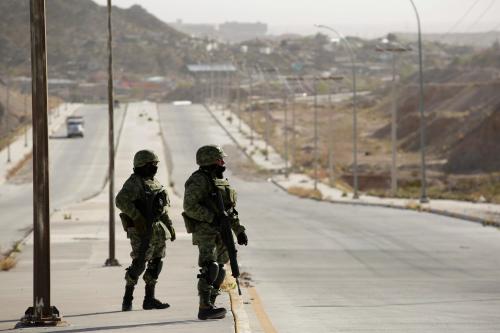
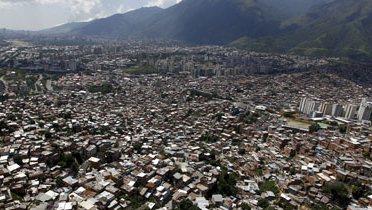
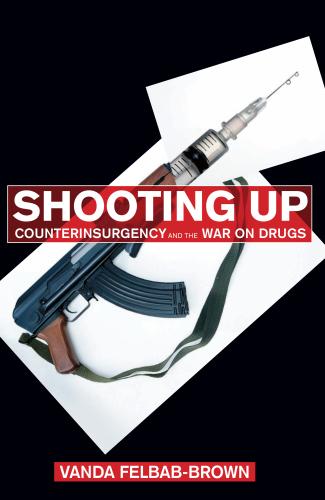
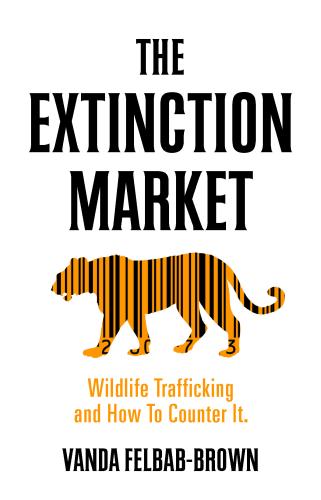

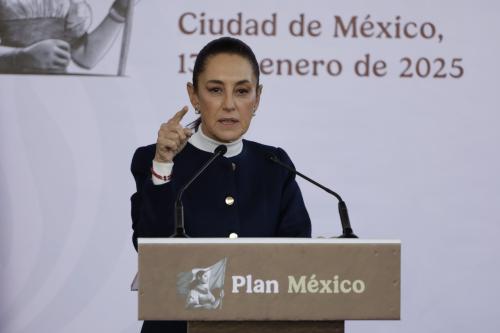
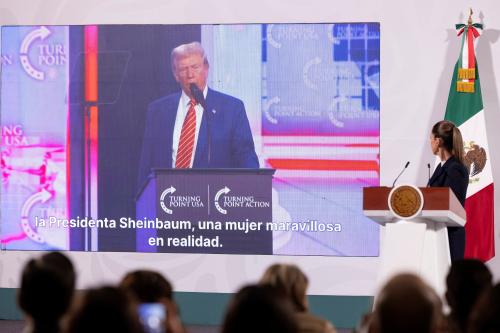
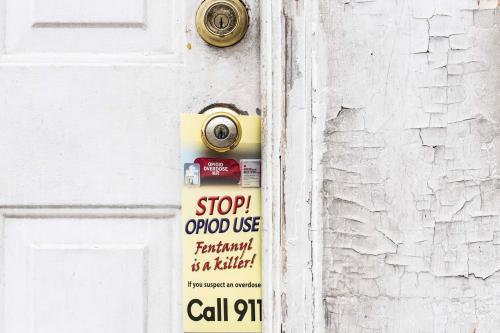
Commentary
Legalizing drugs and illegal economies is no panacea for Latin America and the rest of the world
March 31, 2021